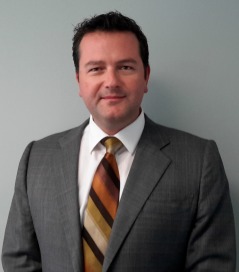Omega ATS shoots…and SCORES!
The upstart Canadian-based ATS formed in October 2007 has managed to grab 5 percent of total trading volume in the Great North since the country’s recent change in market structure.
In an exclusive to Traders, Omega chief executive officer Sean Debotte told of the firm’s growth process from startup to today and shared some thoughts on sister trading venue, Lynx.

“We have organically grown since the beginning of the year from an average of about 2% to a very strong 3.5%,” Debotte told Traders. “But we have gained another 1.5% in new trading flow since the change.”
Not bad for just a few years of existence in a land were trading off exchange is frowned upon. In other words, Omega has grown a whopping 500 percent.
The growth comes amid changes in Canadian equity market structure – which differs from its U.S. counterpart. First, the Canadian trading markets are dominated by a handful of large banks and brokers, unlike the U.S. Also, the Great North’s marketplace is not nearly as fragmented as its southern cousin – Canada’s equity marketplace sees almost 2/3 of its trading volume executed at TMX Group-controlled venues, with the balance scattered among a handful of other significantly smaller exchanges.
Lastly, and perhaps most importantly, dark pool trading in the country is much less than in the U.S, where upwards of 40 to 50 percent of trading volume occurs away from public exchanges. And the country’s regulators, in a bid to keep the bulk of trading volume open and transparent, have declared that a trade in Canada can be executed in an ATS pool only when “meaningful” price improvement occurs.
According to Canadian regulator IIROC, meaningful price improvement is ‘half a tick’ when the spread is one tick and ‘one full tick’ when the spread is greater than a tick.
Remember too that Canadian ATS’s are in fact ‘lit’ venues and are the equivalent to ECN’s in the U.S. Dark volume in Canada has slumped to around 4% of the total volume executed.
Alternate lit venues, such as Omega and sister ATS Lynx, make up the other 30%.
As a result, many pools such as TMX’s darker pools Select and IntraSpread have closed up and been decommissioned as they were no longer profitable to operate under the new guidance. Now TMX operates only its Inverted and Venture marketplaces.
“When regulators said all dark interactions had to have a meaningful price improvement, many pools just shuttered,” Debotte said. He added that TMX Select is designed to complete with Omega, which runs an inverted price model.
As a result of the closures, Omega has been able to capture this extra market share. However, TMX Group, not ready to give up market share to competitors, has changed its Alpha marketplace’s pricing schema to an inverted one. Debotte told Traders that trading flow to inverted venues has climbed in 2015 to 14 percent of total volume from 9 percent.
In an inverted pricing schema – the active participant is rebated while the passive participant pays a fee to provide liquidity.
“We’ve seen more flow in total since Inverted was decommissioned, absolutely,” he said. Of the total 14 percent of total volume that trades on inverted marketplaces, Omega executes 35 percent.
There are four venues in Canada that trade using an inverted pricing methodology – including Omega. Omega pays 8.5 mil for executions on stocks less than one dollar Canadian and 14 mils for stocks over one Canadian dollar.
“In the broad sense, we’re looking to grab more flow as we feel our pricing is aggressive versus the competition,” Debotte told Traders. “Right now it’s that cost sensitivity that is driving clients to us. If the nature of fair and open competition stays, that cost sensitivity pressure will continue to be applied as we continue to offer aggressive pricing.”
As for sister venue Lynx, Debotte said that ATS is continuing to attract new participants given the venue’s maker-taker schema. Lynx also doesn’t blanket charge for active fees.



